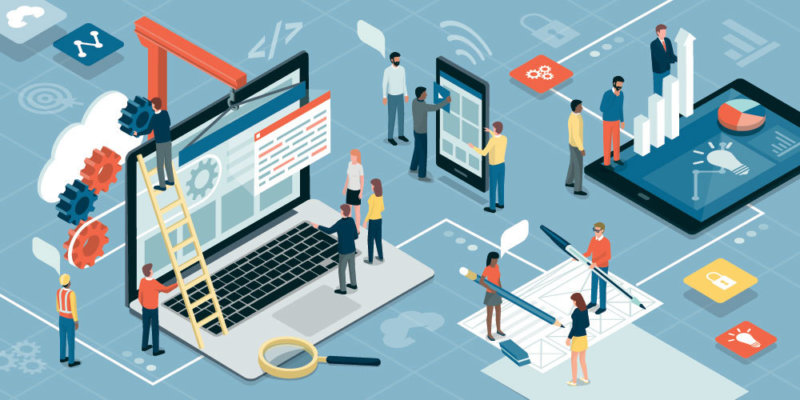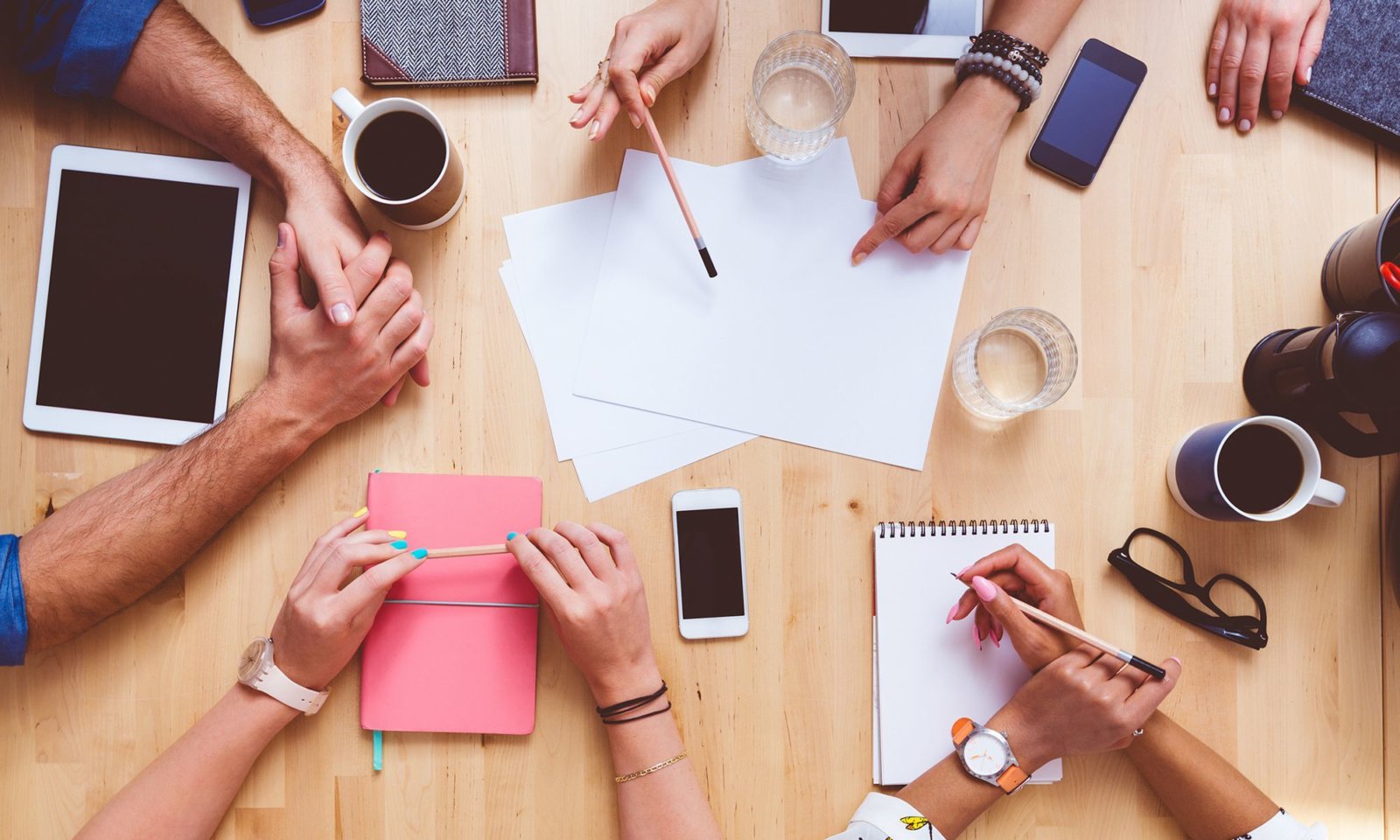
Growing up Vietnamese-American, I was taught to honor and respect people, never to waste anything and to always think beyond myself. I was also taught to hide conflict and to ignore problems, especially if had to do with someone senior to me.
Ich habe schnell gelernt, dass Ehre und Respekt nicht von Dauer sein können, ohne dass Konflikte aufgedeckt und proaktiv gelöst werden. Bei Planview AgilePlace beginnt unsere Kultur mit den Menschen. Die unterschiedlichen, schrulligen Persönlichkeiten in unserem Unternehmen dürfen zum Vorschein kommen - sie machen uns zu dem, was wir sind.
But our traditions go deeper than bacon, Doctor Who, and Nerf guns. They’re rooted in an intrinsic hunger and drive to work together to improve the way the world works. We know that respect for people is one of the most effective Lean improvement methods, which enables us to maintain our agility, and adapt to change quickly and sustainably.
All this is not without conflict. We have a diverse team with diverse skills and personalities, which makes conflict (defined as a difference in opinion or approach) inevitable. We know that when diversity is not treated with respect, this healthy, natural conflict can escalate to become unhealthy, and turn into distrust, frustration, or resentment.
Wie schlanke Verbesserungsmethoden Respekt ermöglichen
Unsere Grundwerte (Respekt vor den Menschen, kontinuierliche Verbesserung und ein unerbittlicher Fokus auf die Bereitstellung von Kundennutzen) haben uns geholfen, eine Kultur des Verständnisses und der Verantwortlichkeit zu schaffen, die sich über Hintergründe, Persönlichkeiten, Arbeitsabläufe und Glaubenssysteme erstreckt.
These values are strengthened through Lean principles, which are applied across the organization, from the way we hire to the way we interact with each other on a daily basis. I’ll explain each of those Lean improvement methods and principles, as well as give practical tips for how to incorporate them into your organization to create a rich, diverse, respectful Lean culture.
Optimieren Sie das Ganze
Culture is our heartbeat here at Planview AgilePlace. Everyone who joins Planview AgilePlace goes through our Lean Bootcamp: an intensive training dedicated to learning Lean principles, practice activities that demonstrate Lean tools and product training.
Our learning does not stop there. We continue to train and have refreshers as we join our teams. We have Lunch and Learns, covering everything from blogging to public speaking, so we can empower every Planview AgilePlaceter to use their diverse knowledge and expertise to benefit others. We empower everyone to have an equal voice and a channel to celebrate their diversity.
We are all Lean practitioners and teachers, working to practice Lean improvement methods in every activity we do. We are constantly exercising and strengthening our Lean muscles, not only to punch bears, but to face our fears and overcome it to all follow a common purpose.
Gehen Sie den Gemba Walk
Gemba means to “go and see.” Walking the gemba is never more critical than when we face incidents or outages with our software. Our cross-departmental incident response team works together to make sure customers, employees and other stakeholders are all up-to-date and informed.
Our CEO, CIO, CTO are in the trenches with the product development, marketing and sales teams, sometimes burning midnight oil. As we improve the incident response process, we document it in a place everyone can access. We hold regular trainings to keep all teams informed of proper protocol. We do the gemba walk to physically go to the heart of the problem, make it transparent and fix it together.
The same goes for people. When conflict arises out of our diversity, we come together to listen and support. When we have team issues, we all get together in a room and whiteboard our concerns and action items to resolve them.
Walking the gemba is to walk in someone’s shoes. We do this through being in the same place, face to face. How do we do this when we have employees all over the world? We have virtual conferences, we fly people in for our planning meetings. Twice a year, we get everyone together for an entire week of planning, bonding, and learning. We work hard to provide an environment where everyone can participate, no matter the distance.
Kaizen
Our culture of Kaizen (continuous improvement) allows us to fail fast, so we can learn faster. Planview AgilePlace has an environment where we can reflect on our mistakes and work on mistake proofing our process. We invest heavily in training to teach the skills and knowledge teams need to succeed.
Kaizen is everyone’s responsibility. Team leads often identify their own learning gaps, and develop team training for our bi-weekly team training sessions. I work with team leads and subject matter experts to cross-train teams in technologies like Rabbit MQ and Docker. We have an open library and subscriptions to training sites for self-learning. We have an all hands (whole) company training on a regular cadence, so we can constantly reflect, learn, and get better.
We have to have slack time to practice Kaizen, which is why slack time is an integral part of our workflow. Slack gives us time to reflect, practice, and improve our work. It’s everyone’s responsibility to create an environment where slack time is encouraged and respected.
Wir müssen auch selbst die freie Zeit nutzen, um zu lernen, zu wachsen und für unsere Teams immer wertvoller zu werden. Ein gesundes Unternehmen nimmt sich Zeit, damit jeder lernen kann.
Kanban
We fear what we don’t see, and we make assumptions about things we don’t know. Kanban is the tool we use to visualize our work, and it can also help visualize defects and misunderstandings. By using process policies, everyone can decide on guidelines and boundaries together.
Planview AgilePlace (the software) allows you to make those policies transparent to everyone, so there are no misunderstandings — and if the policies aren’t clear enough, they can be edited. The more we see, the more we understand and the better we can work together.
Unsere Teams veranstalten Lean Walkabouts und Lean Coffees, die zu offenen Gesprächen anregen und jedem die Möglichkeit geben, sich zu äußern. Normalerweise zeichnen wir ein einfaches "To Do, Doing, Done"-Kanban-Board auf ein Whiteboard, auf dem jeder Haftnotizen mit Verbesserungsvorschlägen einträgt. Sobald alle ihre Ideen eingereicht haben, stimmen die Teilnehmer darüber ab, welche Themen diskutiert werden sollen. So kann jeder gleichberechtigt mitreden und gehört werden. In einem offenen Forum wie diesem können Menschen mit unterschiedlichem Hintergrund ihr Fachwissen, ihre Sichtweise und ihre Bedenken einbringen. Einfach reden, ohne zu urteilen, ist eine der effektivsten Lean-Verbesserungsmethoden, die uns zur Verfügung stehen, und jeder - auch jemand mit wenig Lean-Erfahrung - kann daran teilnehmen.
Gemeinsam stärker
Meine Eltern haben mir immer gesagt, dass jeder ein Stäbchen zerbrechen kann, aber wenn ich ein Bündel Stäbchen hätte, wäre es fast unmöglich, es zu verbiegen. Eine Organisation ist nur so erfolgreich wie ihre Mitarbeiter, die in einem einzigen Ziel vereint sind. Hier bei Planview AgilePlace haben wir alle das gleiche Ziel: die Arbeit für alle Menschen auf dieser Welt besser zu machen. Versuchen Sie, einige dieser Lean-Verbesserungsmethoden in die Kultur Ihres Teams oder Ihrer Organisation zu integrieren, und beobachten Sie, wie sich Zusammenarbeit, Qualität und Kommunikation verbessern.




